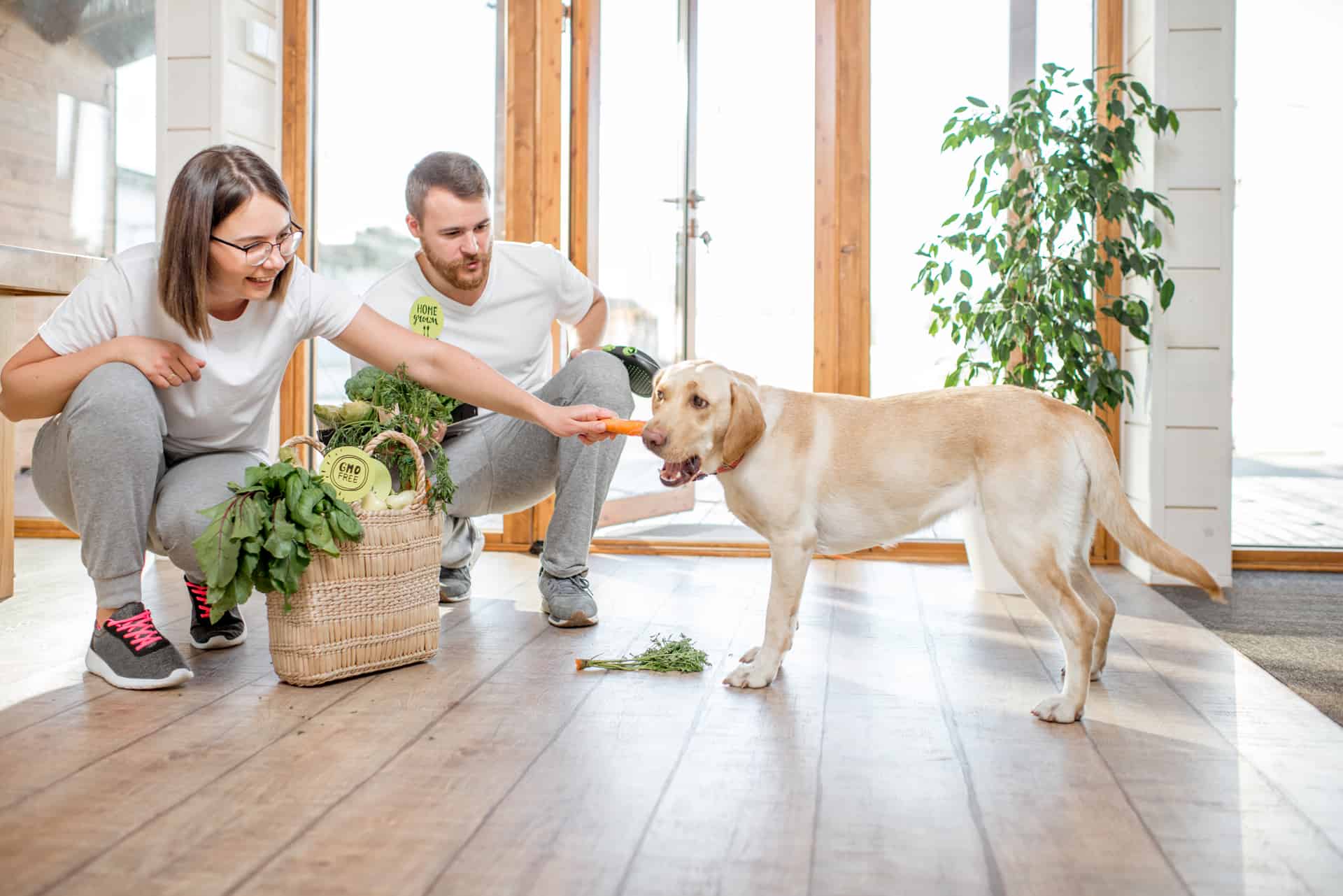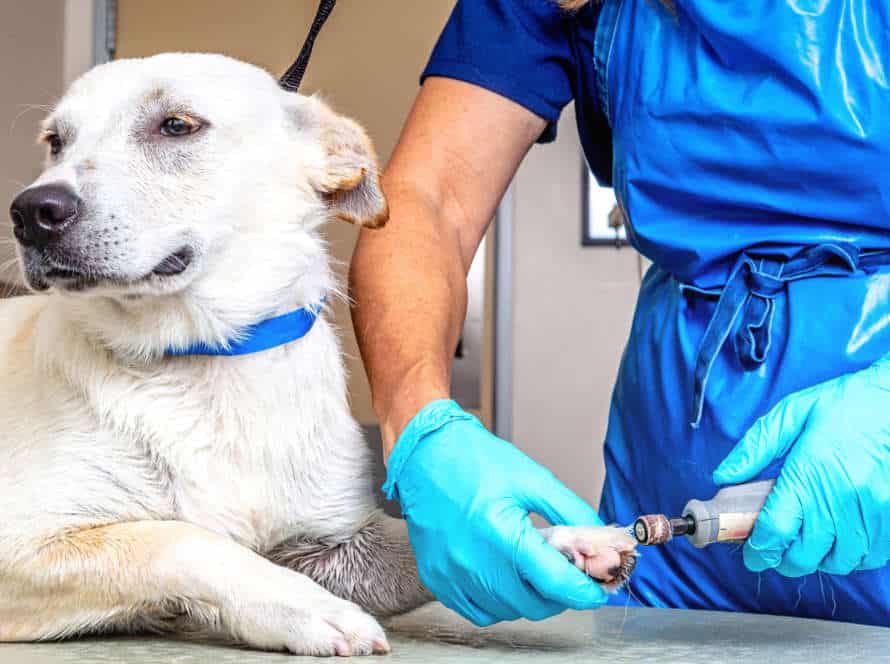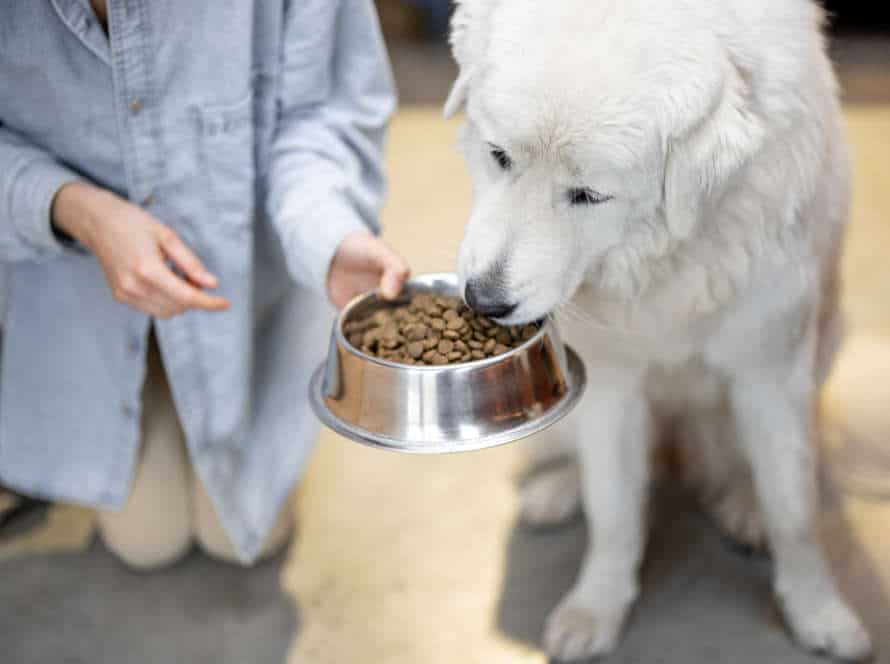Homemade Dog Food: A Healthier Alternative to Store-Bought Meals?
Feeding your pup homemade food can be a better choice than store-bought meals. But, it’s important to guarantee their diet is balanced and meets their nutritional needs. Here are some tips for creating a healthy homemade dog food:
- Pick a source of protein, like chicken or beef. It should make up at least half of the meal.
- Add healthy carbs such as sweet potatoes or brown rice. Plus, vegetables like spinach, broccoli or green beans.
- Include some healthy fats, like olive oil, flaxseed oil, or fish oil. These fats help with your pup’s skin and coat health.
- Do not add any dangerous ingredients like onions, garlic, chocolate, or avocados.
- Talk to a veterinary nutritionist to create a balanced and complete diet for your pup. Pro-tip: While homemade dog food can be healthier, ensure that you make it according to your pup’s nutritional requirements and preferences to keep them healthy and content.
Outline-
Preparing homemade dog food is a great choice for your pup! You can make sure they get the nutrition they need. Here’s what to keep in mind:
- Reach out to a vet or canine nutritionist to find out what and how much your dog needs.
- Pick proteins like lean meats or fish for essential amino acids.
- Add healthy fats such as avocados, coconut oil, or fatty fish to help their skin, coat, and immune system.
- Complex carbs like sweet potatoes or brown rice give your pup energy.
- Don’t give them anything toxic like chocolate, garlic, onions, grapes, or raisins.
Homemade dog food can give your pup a healthier and tastier dinner than store-bought meals.
The Benefits of Homemade Dog Food
Homemade dog food has many advantages! You can be sure all the ingredients are fresh and safe for your pup. Plus, you can control extra things such as fats, proteins, and carbs. And you can personalize the food to your pup’s special dietary needs.
What are the main benefits of homemade dog food? Let’s find out!
Know What Your Dog is Eating
Making sure your pup eats well is important for their health. Homemade dog food can be better for them. You can choose fresh ingredients, avoid additives, and cater to allergies. Also, you can monitor the proteins, carbs, and fats your dog eats. This can help with weight management and nutrition. Like people, dogs need a balanced diet. But talk to a vet or nutritionist to make sure it’s complete and balanced.
More Control Over Nutritional Content
Making homemade dog food has many advantages. You can manage the diet of your pet. Store-bought food often has additives and fillers, not healthy for dogs. By making dog food at home, you can check what your pup eats and take care of their health. Here are some tips:
- Speak to your vet about the proper nutrients and portion sizes for your dog.
- Use fresh ingredients like lean meats, veg, and whole grains.
- Avoid food harmful to dogs like chocolate, onions, garlic, and grapes.
- Store and prepare food carefully, to avoid bacteria.
You can give your pup a healthier, more natural meal if you make homemade dog food. This will help keep them healthy and happy.
Cost-Effective Option
Make homemade dog food? A great option! It’s cost-effective and has many benefits for your pup. You can have control over the quality and freshness of ingredients. Plus, it can be less expensive in the long run.
But, consult with your vet first! Ensure the recipes and ingredients meet your dog’s needs. Pro Tip: Get the right ingredients and recipes. Homemade dog food can be a healthy and cost-effective way to give your furry friend a nutritious and yummy diet!
Homemade Dog Food vs Store-Bought Meals
Pet owners may feel intimidated when it comes to making their own pet food. Is homemade grub better for dogs than store-bought kibble? Let’s weigh the pros and cons of each option. This will help you determine which is the top tucker for your pooch!
Quality of Ingredients
Homemade dog food is healthier and more nutritious than store-bought meals. When you make your pup’s food at home, you can avoid fillers, artificial flavors, and preservatives.
Fresh, whole ingredients give your pet essential nutrients. Plus, you can customize the food to their age, weight, and activity level. Though it takes more time, the rewards of homemade dog food are worth it for your pet’s health and happiness.
Nutritional Content
Homemade dog food has many advantages over pre-packaged meals. Control of the nutritional content is one of them!
- Protein: Homemade meals such as cooked chicken or turkey provide higher quality protein that is easier to digest.
- Carbs: Dogs don’t need a high-carb diet, but complex carbs such as brown rice and sweet potatoes give sustained energy.
- Vitamins and Minerals: Veggies like carrots, broccoli and spinach are rich in A and C vitamins, calcium and iron which are crucial for a canine diet.
- Fats: Include healthy fats like olive oil or fish oil to support a healthy skin and coat.
Pro tip: Before making homemade dog food, consult with a vet or professional nutritionist to meet your pup’s dietary needs.
Cost Comparison
Making homemade dog food is better for your pet’s health and more cost-effective in the long run. The initial cost of ingredients may seem high but store-bought dog food can be pricier.
Homemade dog food gives balanced nutrition, without artificial preservatives, fillers or by-products. It is made with natural ingredients, which bring many health benefits like healthy skin and coat, better digestion and more energy.
Though homemade dog food takes time to prepare, it’s an affordable, healthy and rewarding choice. You’ll save on vet bills, guarantee the best possible nutrition and show your pet the love it deserves.
Homemade Dog Food Recipes
Home-made dog food is now more popular, as pet owners search for better options than store-bought meals. Making dog food at home needs knowledge of pet nutrition and safety. This article talks about various homemade dog food recipes, their nutritional values, and safety worries.
Chicken and Rice Dog Food Recipe
Making your own doggy meals at home? It can be healthier and more wallet-friendly than store-bought food. Here’s a recipe for yummy chicken and rice chow:
Ingredients:
- 2 1/2 lbs boneless, skinless chicken thighs
- 1 cup uncooked brown rice
- 1 cup chopped carrots
- 1 cup chopped green beans
- 1/2 cup chopped spinach
- 2 tbsps olive oil
- 4 cups water
Directions:
- Heat the olive oil in a large pot, then add the chicken thighs. Sauté until pinkness fades.
- Add the rice, carrots, green beans, spinach, and water.
- Boil, then reduce heat and simmer for 45 mins or until rice is cooked and most liquid is gone.
- Cool the mixture.
- Store in airtight container for up to 3 days, or freeze in portions for up to 3 months.
This dish is packed with protein, fiber, vitamins, and minerals – all essential for your pup’s health and happiness. Pro tip: Before changing your pup’s diet, consult your vet to make sure this recipe is right for them.
Beef and Sweet Potato Dog Food Recipe
This tasty beef and sweet potato dog food dish is great for pet owners who choose homemade grub over store-bought meals. You can monitor the quality and freshness of the ingredients in your pup’s meals – giving you peace of mind.
Ingredients:
- 1 pound ground beef
- 1 sweet potato, peeled & diced
- 1/2 cup frozen peas
- 1/2 cup frozen green beans
- 1/2 cup carrots, diced
- 1/2 cup water
Steps:
- Brown the ground beef in a large skillet. Drain excess fat.
- Put sweet potato, frozen peas, frozen green beans, carrots, & water into skillet.
- Boil, then reduce heat & simmer for 20-25 minutes or until sweet potatoes are soft.
- Cool before serving to your dog.
Pro Tip: Home diets need careful planning & consultation with a vet to make sure they meet all your fur baby’s nutritional needs.
Vegetarian Dog Food Recipe
Homemade vegetarian dog food is a wallet-friendly and nourishing meal for your furry friend. This recipe has all your pup’s dietary needs met without meat proteins.
Ingredients:
- 1 cup quinoa
- 1 can of kidney beans (drained & rinsed)
- 1 sweet potato (peeled & cubed)
- 1 carrot (chopped)
- ½ cup frozen peas
- 2 tbsp olive oil
- 2 cups water
Directions:
- Rinse quinoa thoroughly.
- Put in a large pot & add water. Boil on high heat.
- Reduce heat to low. Cover & simmer for 15 mins.
- Add the kidney beans, sweet potato, carrot, peas, & olive oil. Stir until mixed evenly.
- Cover & simmer for another 15-20 mins or until veggies are tender & liquid is absorbed.
- Remove from heat & cool.
- Serve to your pup, dividing into portions as needed.
Note: Before switching to a vegetarian diet, consult a veterinarian or animal nutritionist to make sure your dog is getting all essential nutrients.
Tips for Preparing Homemade Dog Food
Searching for a healthier option for your pup? Making homemade dog food could be the answer! Here are some tips to get you started:
- Pick the right ingredients.
- Figure out the correct portion sizes.
This guide will help you create a healthier diet for your pooch!
Portion Control
Portion control is essential for homemade dog food. Overfeeding can cause obesity and other health issues. Here are tips for portion control:
- Determine how much your dog should eat based on weight, age, and activity level.
- Use measuring cups or scales for accurate portions.
- Divide the daily amount into two or three meals.
- Limit treats and include them in daily calorie intake.
- Monitor your dog’s weight and adjust portions.
- Every dog is different. Talk to your vet for feeding recommendations to get all the nutrients your dog needs.
Food Safety
Homemade dog food can be a yummy and healthy alternative to store-bought grub. But, you must follow food safety tips to protect you and your pup.
Here are some to keep in mind:
- Use quality ingredients from trustworthy sources.
- Wash hands and surfaces before and after handling raw ingredients.
- Cook meat to an internal temperature of at least 165°F to kill bad bacteria.
- Avoid ingredients that are toxic to dogs like garlic, onions, grapes, and chocolate.
- Store homemade dog food in air-tight containers in the fridge or freezer.
- Throw away any uneaten homemade dog food after 3-5 days in the fridge.
By following these guidelines, your homemade dog food will be safe and delicious for your furry friend.
Supplementing with Vitamins and Minerals.
It’s essential to add vitamins and minerals to your pup’s homemade food, for a balanced and yummy diet. Here are some tips:
- Ask your vet what their dietary needs are, and make meals accordingly.
- Choose fresh meats, veggies and grains of high quality.
- Add sources of vitamins & minerals, like fish oils, calcium powder and vitamin B-complex.
- Change up their food to give them variety, and all the nutrients they need.
By providing a balanced and nutritious diet at home, your dog’s health and happiness can improve! But always check with your vet first.
Frequently Asked Questions
1. Why is homemade dog food a healthier option than store-bought meals?
Homemade dog food allows you to have more control over the ingredients, quality and portions that you feed your dog. You’re able to avoid preservatives, fillers and other harmful chemicals that are commonly used in processed pet food.
2. Can I provide all essential nutrients through homemade dog food?
Yes, you can provide all essential nutrients through homemade dog food by consulting a professional veterinarian or animal nutritionist. Adding supplements and carefully selecting ingredients like proteins, vegetables, and fruits can ensure your dog is getting a balanced meal.
3. Is homemade dog food more expensive than store-bought food?
It depends on the ingredients you choose to use. Some homemade dog food recipes can be more cost-effective than store-bought food, while others can be more expensive. You can adjust the cost to fit your budget while still ensuring that you use high-quality ingredients.
4. What are some common mistakes to avoid when making homemade dog food?
Avoiding common mistakes such as feeding your dog poorly balanced diets, using toxic ingredients such as garlic or onions, not including necessary supplements, and not following a proper recipe can lead to health issues in your dog.
5. How often should I change the recipe of homemade dog food?
You should consult a professional veterinarian or dog nutritionist as to when and whether you should change the recipe of homemade dog food. It depends on the needs and health status of your dog, as well as their age, weight, and breed.
6. Can I freeze homemade dog food?
Yes, you can freeze homemade dog food. Just be sure to properly label the containers with the type of food, date made, and expiration date. It is best to thaw frozen food in the refrigerator before feeding to your dog.







